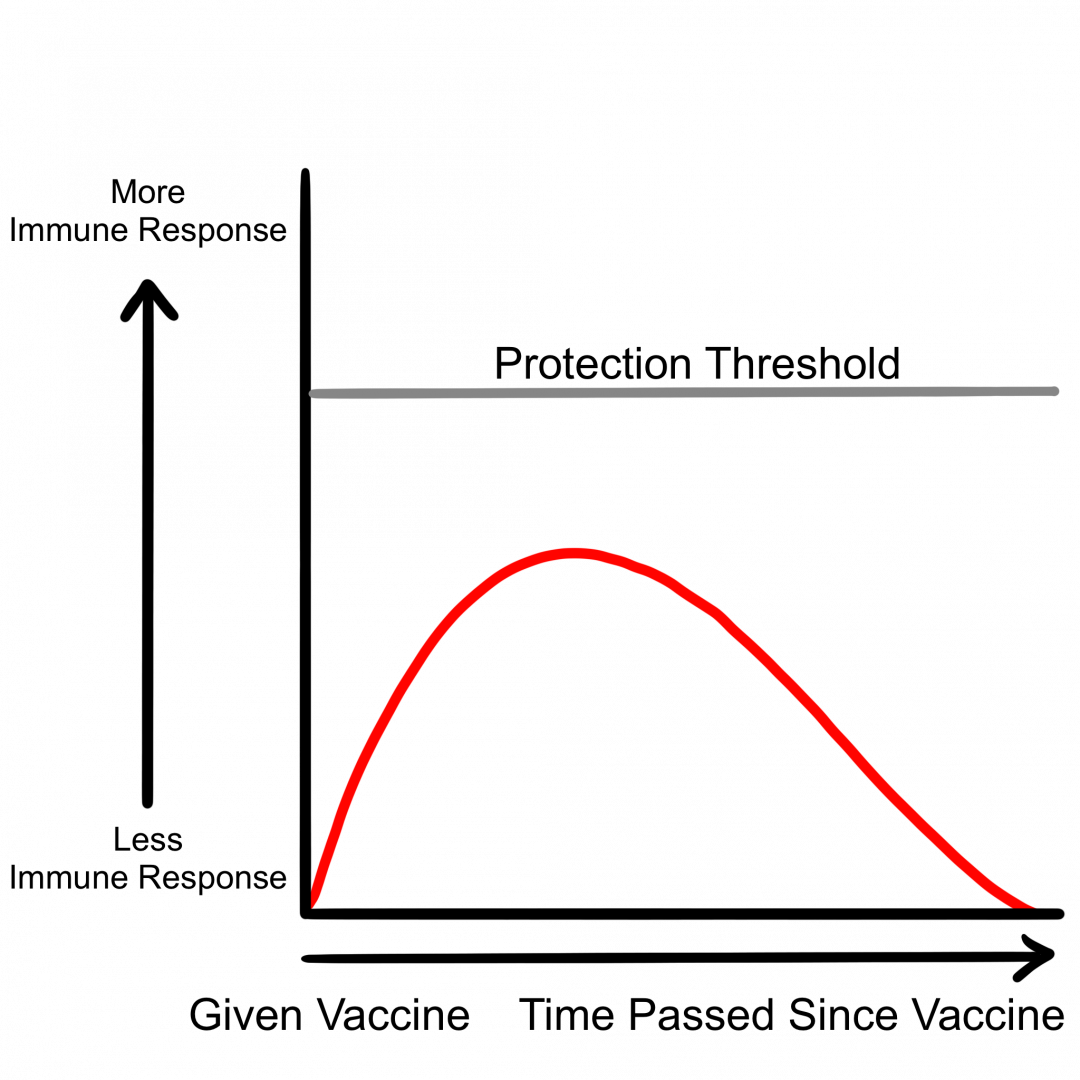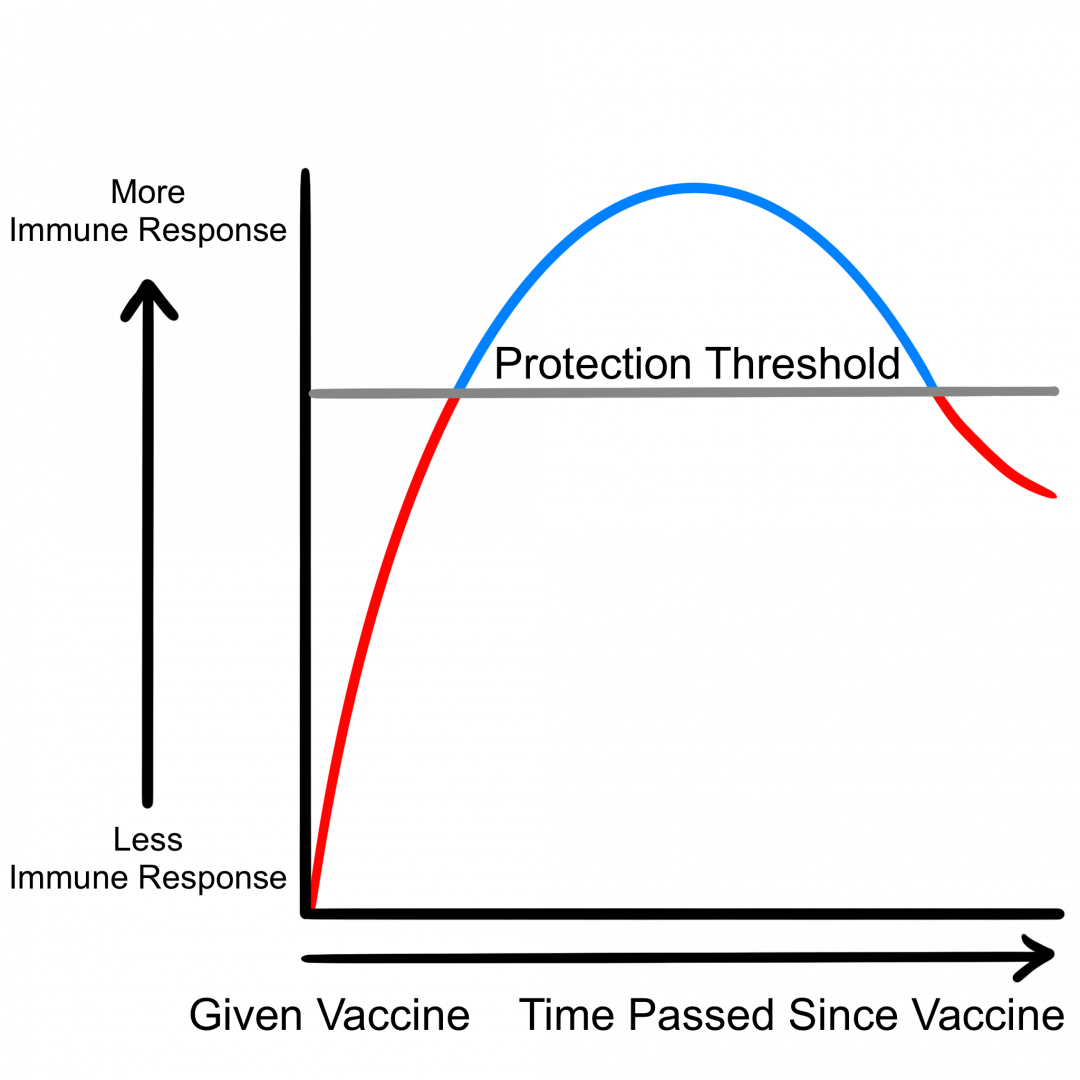What is Vaccine Failure?
No vaccine will guarantee 100% protection. Therefore, it is possible for individuals to become infected despite having been vaccinated, known as vaccine failure.
For a vaccine to be effective, the body needs to make enough specific antibodies to reach a protective threshold, or level of immune (antibody) response necessary to prevent or to reduce severity of infection or disease.
Primary Vaccine Failure

When an individual's immune system fails to make enough antibodies to reach the protective threshold. For example, 2-5% of children who only receive 1 dose of the MMR vaccine fail to develop an adequate immune response. A second dose ensures that recipients reach the protective threshold.
Secondary Vaccine Failure

When an individual's immune system initially reaches the protective threshold but falls below this threshold over time. Some vaccines, such as those for Tetanus, are effective for a limited amount of time and require boosters to ensure individuals are protected. For a table listing the duration of protection by vaccine, click here.
Source
1. Breakwell L, Moturi E, Helgenberger L, et al. Measles Outbreak Associated with Vaccine Failure in Adults — Federated States of Micronesia, February–August 2014. MMWR Morbidity and Mortality Weekly Report. 2015;64(38):1088-1092. doi:10.15585/mmwr.mm6438a7.
